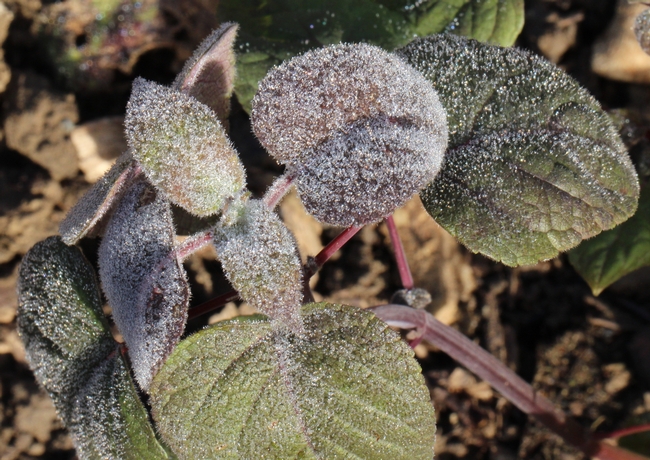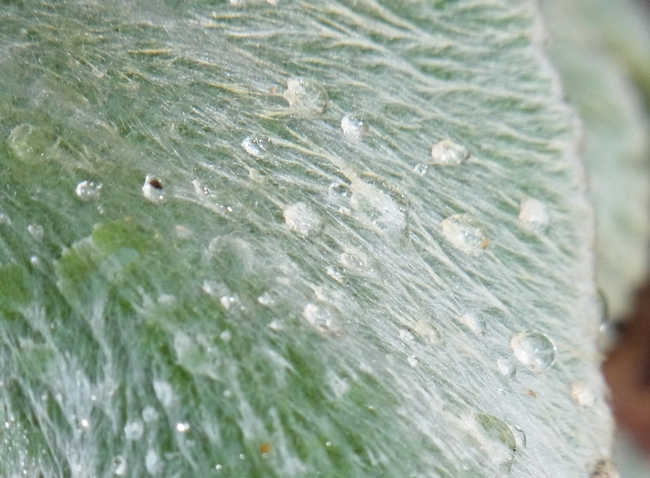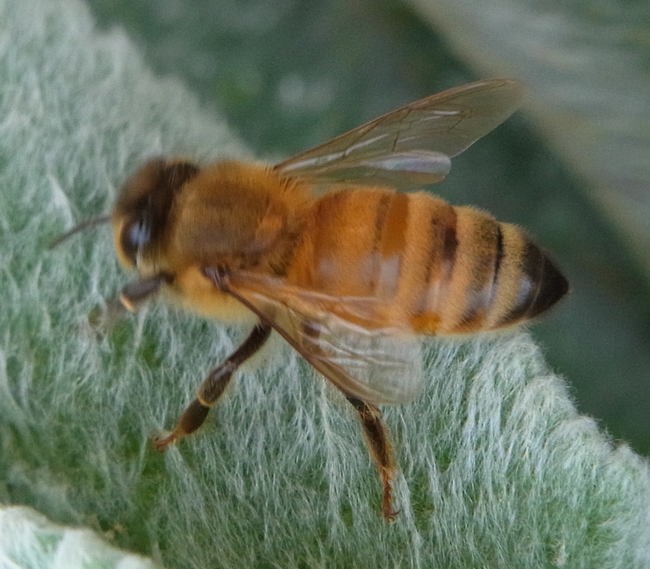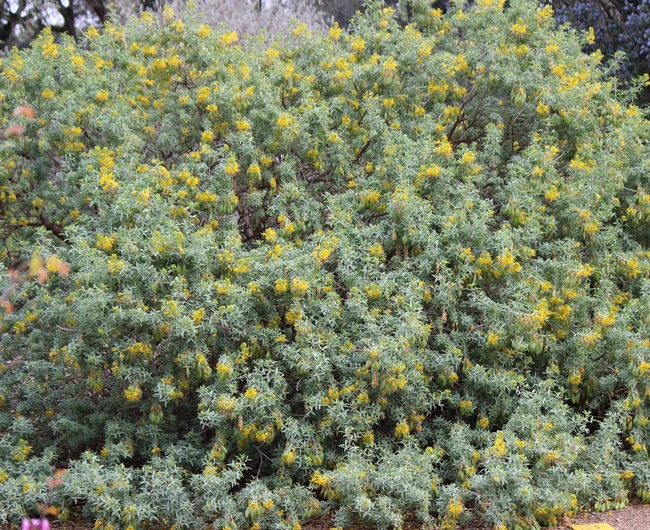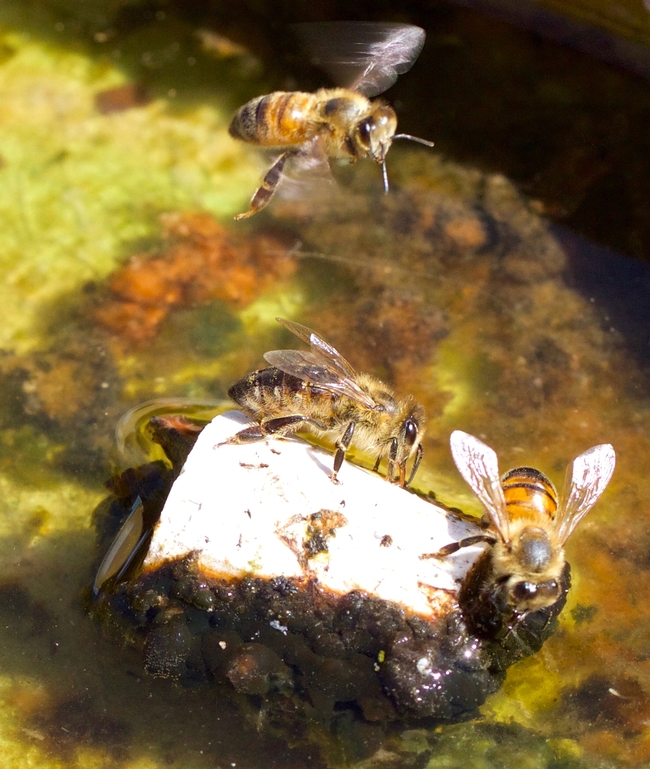- Author: Christine Casey
It's the first week of spring at the Haven and our plants are starting to look their best. For those of you who cannot make it to the garden this week, here's a brief tour of what's going on. For those who can make it, I've included some of the bees to look for.
The garden is currently open, although the cities of Davis and Sacramento are now recommending shelter-in-place. If this expands to other areas or becomes mandatory, the garden will close. Check our web page for the latest information.
Now blooming at the Haven:
Ceanothus, many species. For more detail on this genus, see this previous post.
Western redbud, Cercis occidentalis. This plant provides bright pink flowers early in the year, while leafcutter bees use its foliage for nest construction throughout the summer. This California native needs full sun and little to no summer water. It grows slowly, so it's worth buying a larger size for your own garden. It may be fed on by the redhumped caterpillar; damage occurs towards the end of the season so control is not needed.
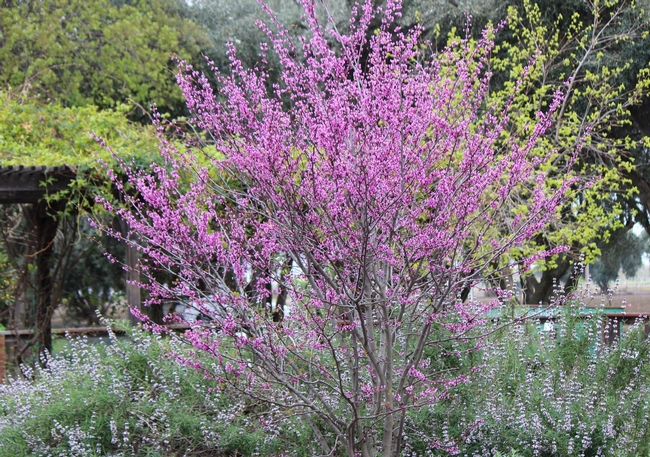
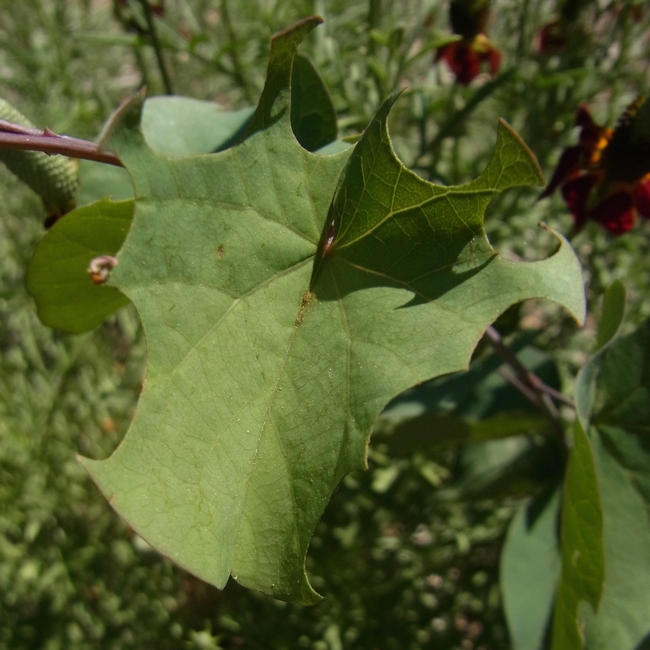
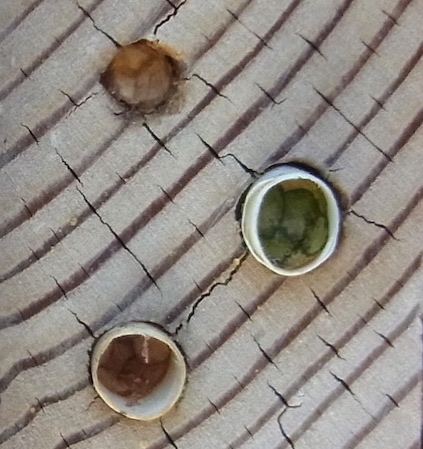
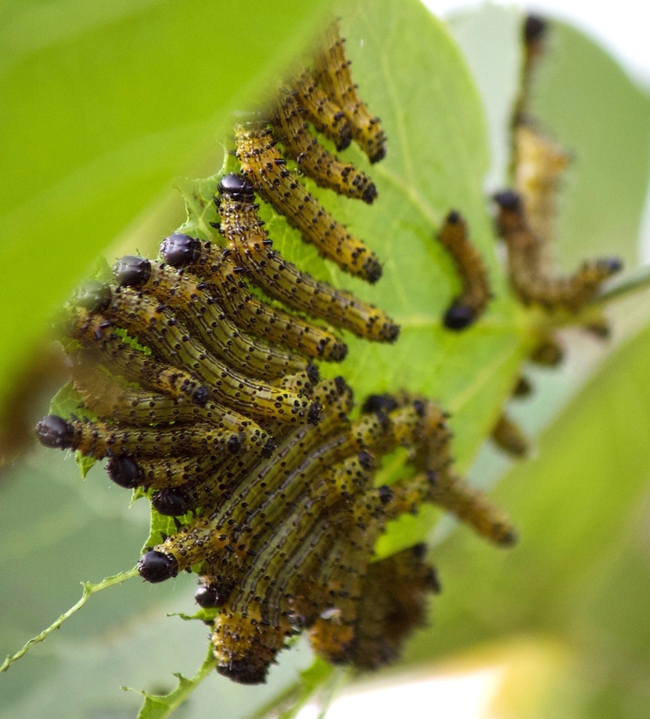
Brandegee's sage, Salvia brandegii. This is a long-blooming California native sage. As you can see from the photo, which shows one plant, it can get quite large. Flowering from late January through May, pair it with the summer blooming native Cleveland sage (Salvia clevelandii) for season-long bloom. It also needs full sun and low summer water.
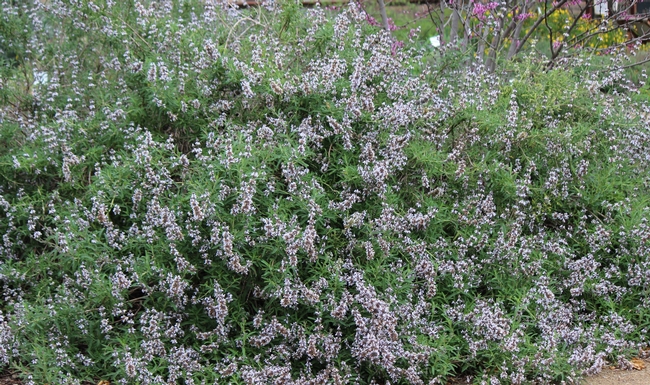
Bladderpod, Isomeris arborea. This is another long-blooming California native. It is at its peak in the spring, but will produce some flowers year-round. Our single plant is about 6 feet by 6 feet. Needs full sun and little to no summer water.
Firecracker penstemon, Penstemon eatonii. This bright red California native is used more by hummingbirds than bees, and adds a jolt of color to the early spring garden. It's soon to be followed by the foothill penstemon, a bee favorite. The firecracker penstemon can take part shade and will re-bloom if given some water after the first flush of flowers. Like most of our native penstemons, it will go dormant in the heat of the summer, at which point watering should stop.
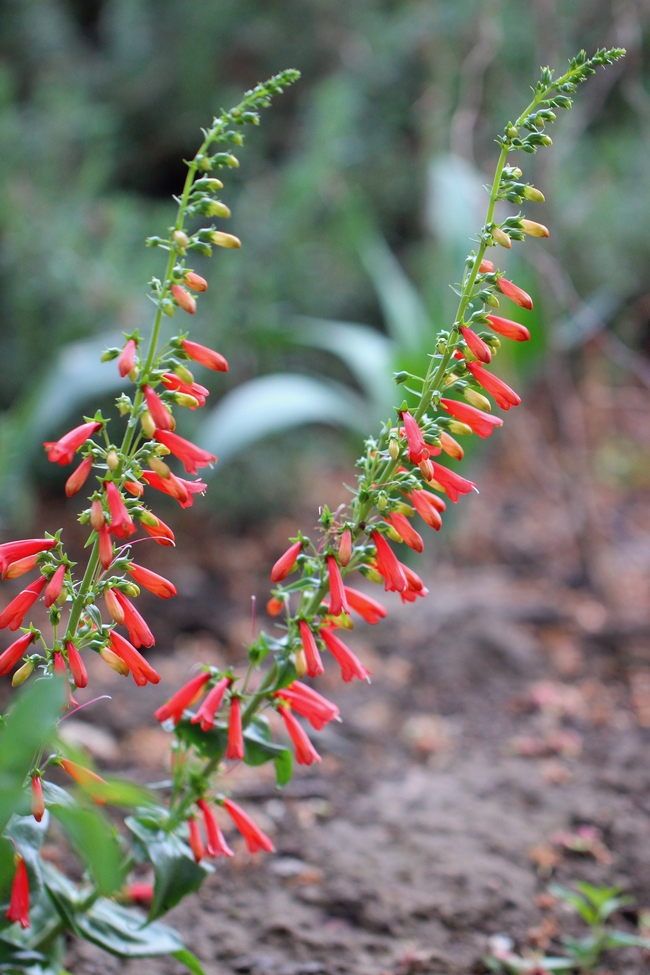
Bees to look for this week include honey bees and the blacktailed bumble bee, Bombus melanopygus. The latter seems to like the Brandegee's sage, so look for it there.
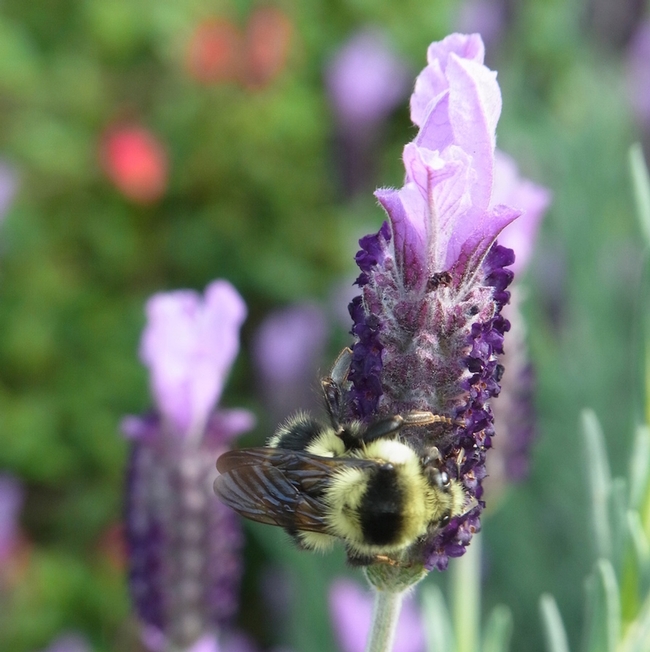
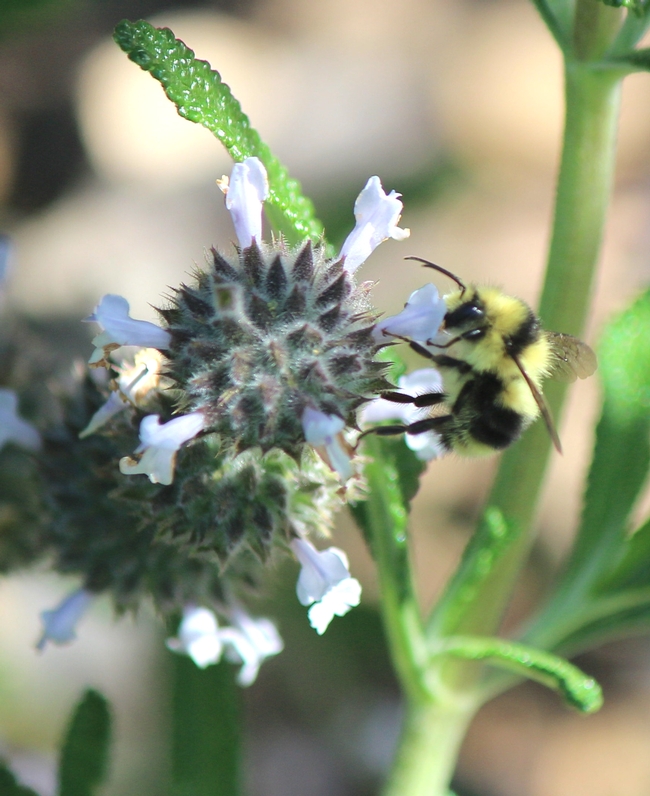
- Author: Christine Casey
The Haven is all about teaching, research, and outreach to save the bees. Our programs are consistently rated highly by our visitors; we've grown every year of our existence and would love for that to continue. For details about our past accomplishments, please see our annual reports: 2018, 2017, 2016, 2015, and 2014.
A grant that provided half of our support recently ended, and I am seeking your support to help keep these successful programs going.
What you can do:
1. Donate here. The Haven is supported solely by grants, donations, and volunteers. A generous Häagen-Dazs gift established the garden, but Häagen-Dazs does not provide ongoing support. Recent funding has come from the California Department of Food and Agriculture, the UC Davis College of Agriculture and Environmental Sciences, the USDA, and the California Center for Urban Horticulture.
Individuals and local clubs such as the Roseville Better Gardens Club and the Sacramento Area Beekeepers Association have also made much-appreciated donations.
If the 3500 people who've attended a tour, Haven event, or class so far this year each gave $10, we'd be covered for seven months. While large donations are great, many small donations are just as important.
2. Attend our fall fundraiser on September 21. Details will be posted soon on the Haven's web page.
Thank you. Together we can keep this unique garden going strong.
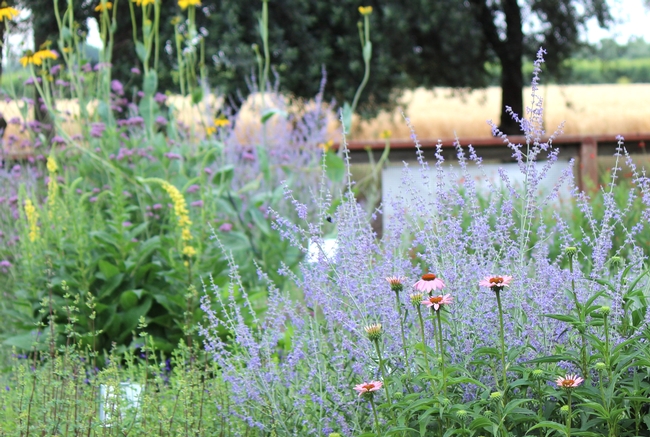
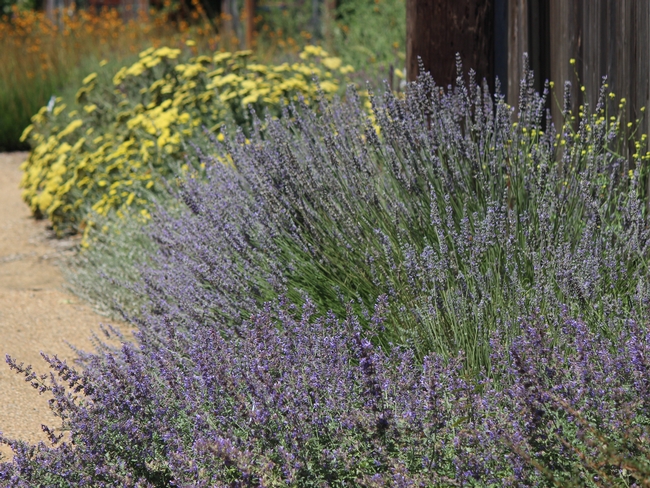
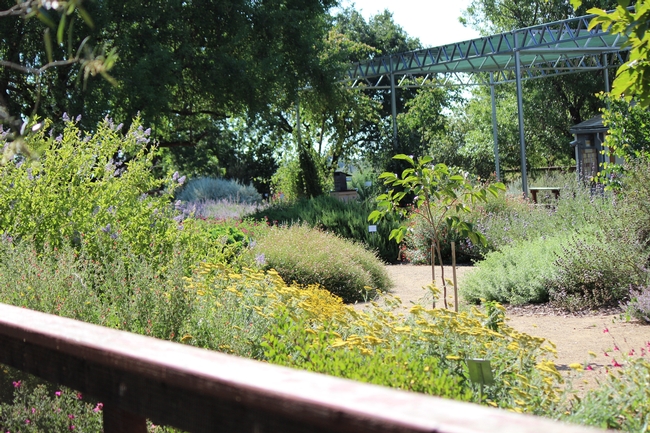
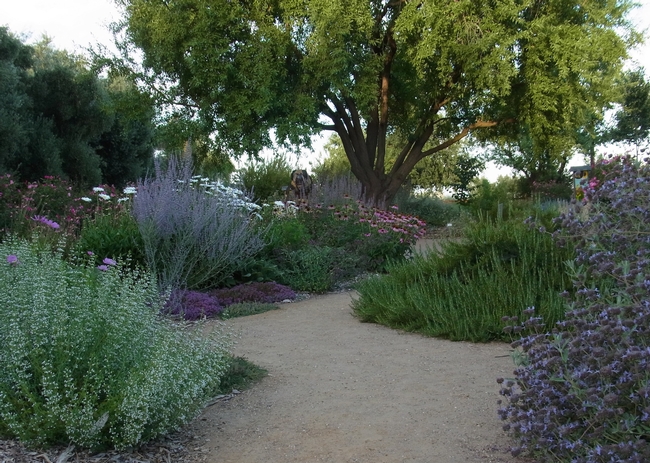
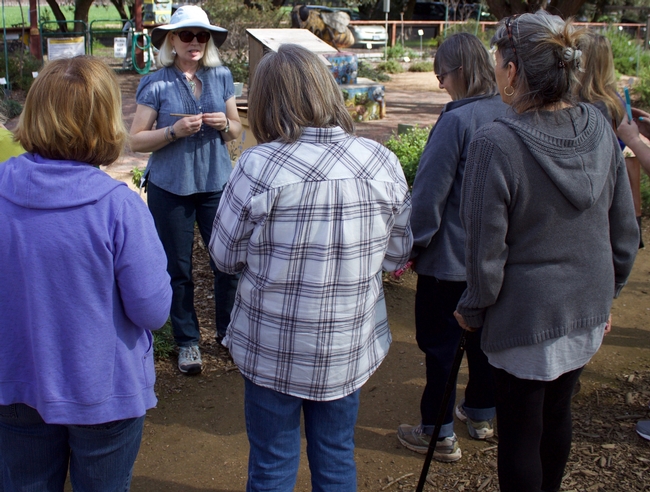
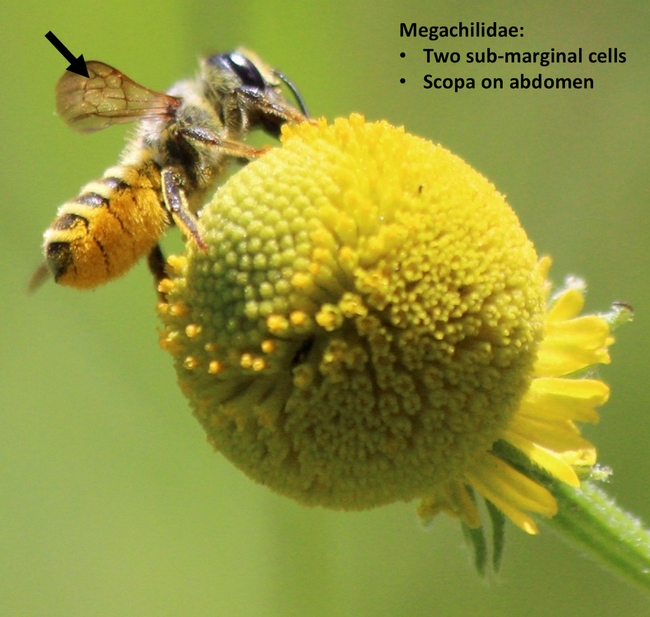
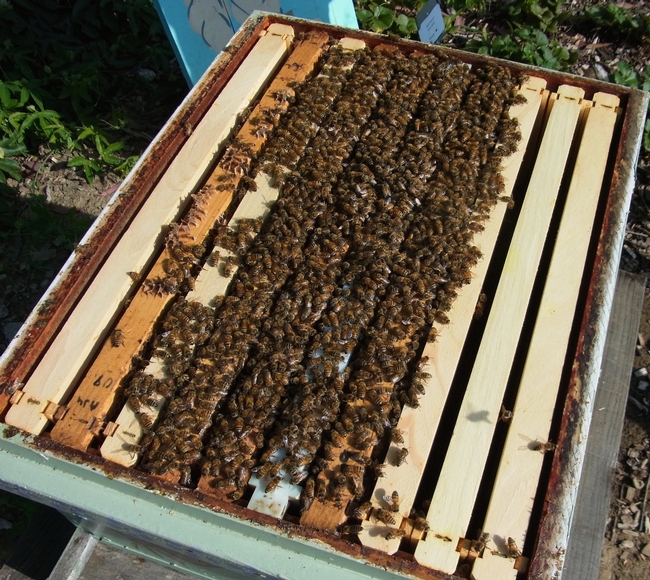
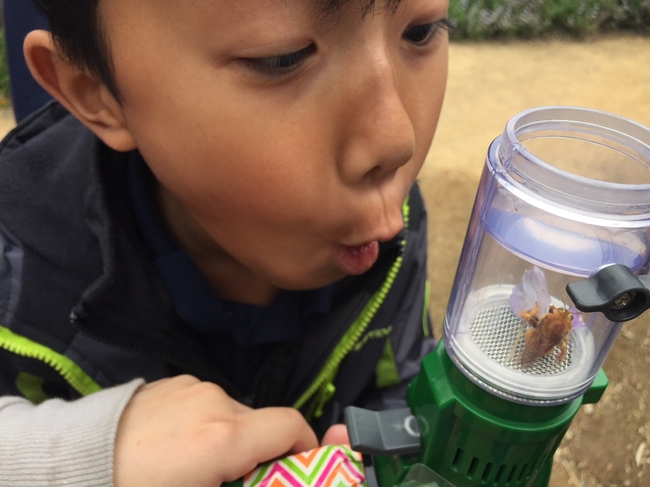
- Author: Christine Casey
Spring is here, and planting is underway in bee gardens throughout California. And planting, especially if you're creating a new garden, means you are thinking about design. In this series of posts I will cover various aspects of garden design -- such as color, texture, shape, and size -- from the perspective of what bees need. Based on research, this information should provide a solid foundation for a successful bee garden.
This post will focus on color. An understanding of color theory is helpful in creating an aesthetically pleasing garden for us, but color is also relevant for bees. All color wheel screen shots shown here are from the Adobe web page.
1. Complementary colors. Colors opposite each other on the color wheel are complementary; this is one of the easiest ways to select colors. Using opposite colors together makes each color appear more vibrant.
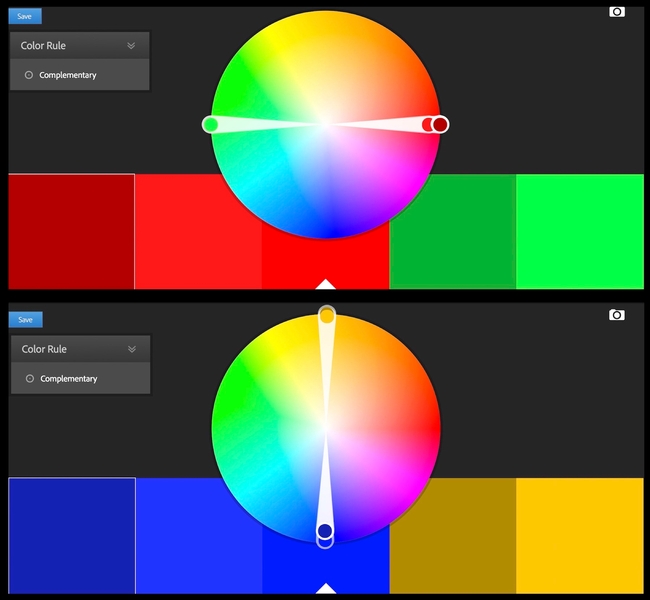
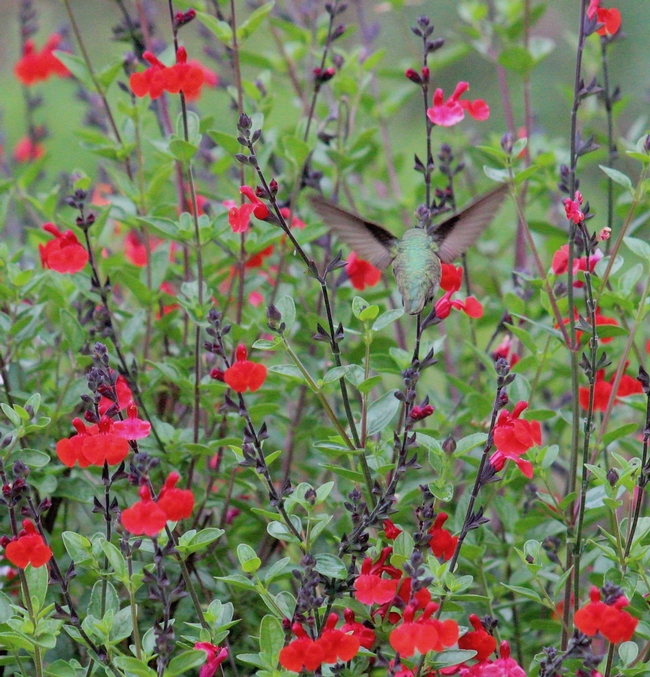
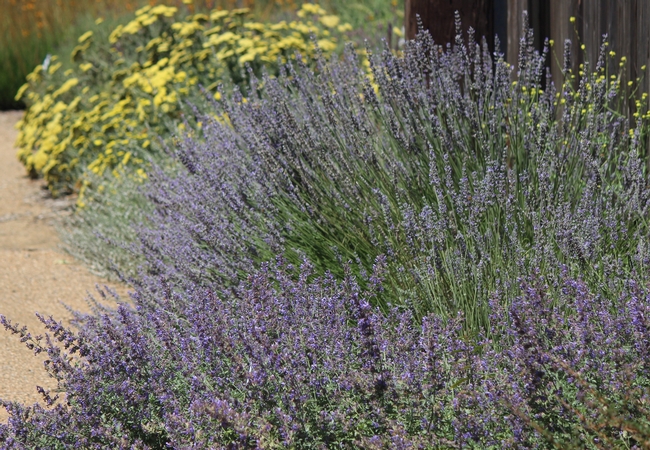
2. Analogous colors. Colors adjacent to each other on the color wheel are analogous; using these colors can be a bit trickier, especially with hot colors like oranges and reds. One way to combine these effectively is to mix in white, as is done here with white gaura in this planting of the analogous colors pink (echinacea) and purple (tall verbena).
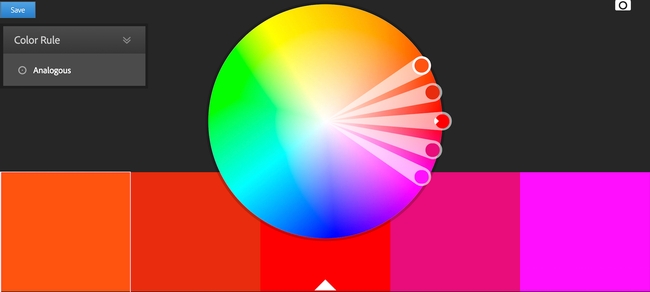
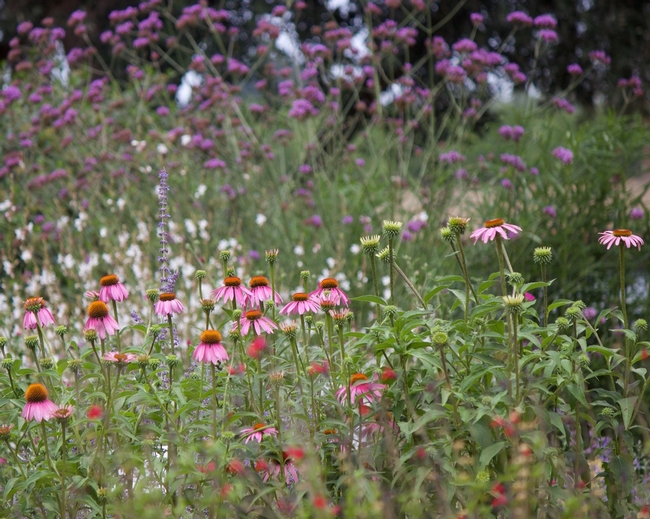
3. Shades of one color. This is the easiest combination to pull off. Cool colors (blues and purples) tend to create a calming effect and make the garden appear larger, while warm colors (reds and yellows) create energy and make the garden appear smaller. Here is an example of shades of a cool color (purple) used in the Haven:
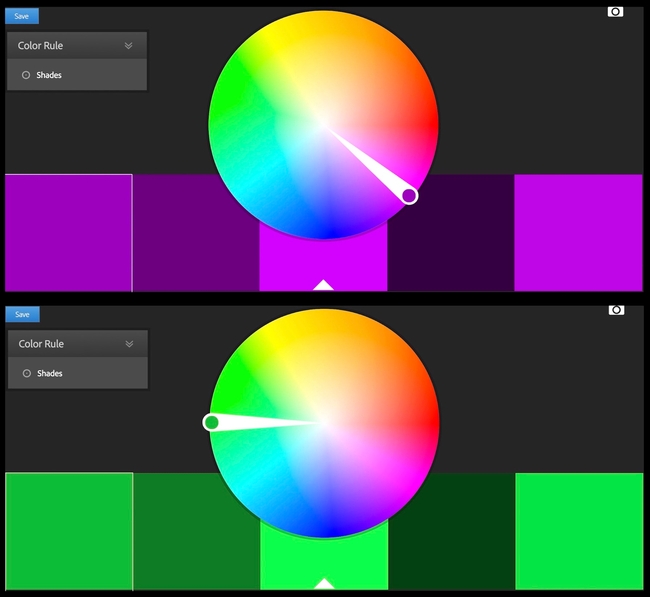
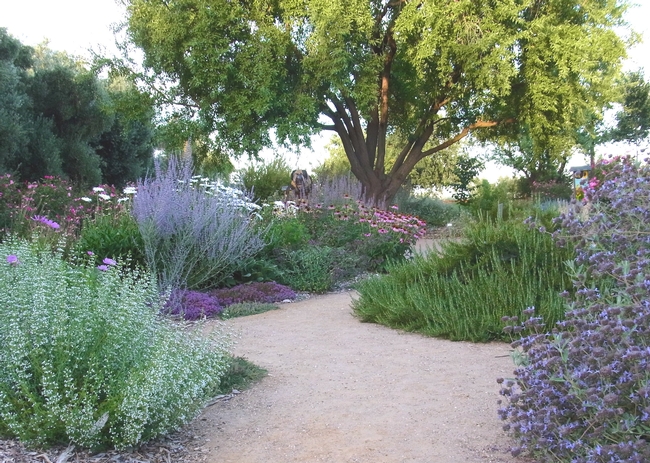
So how do we meld this with bee biology? Here are some pointers:
1. Bees see color differently than we do. They don't see red at all, and see purple very well....there's a reason we have so many purple flowers in the Haven. Here's an example: the first photo shows a flannel bush flower in daylight, while the second shows it under ultraviolet (UV) light, which is the light spectrum where bees see. The 'invisible' nectar (to us) is a bright blue beacon to bees under UV light.
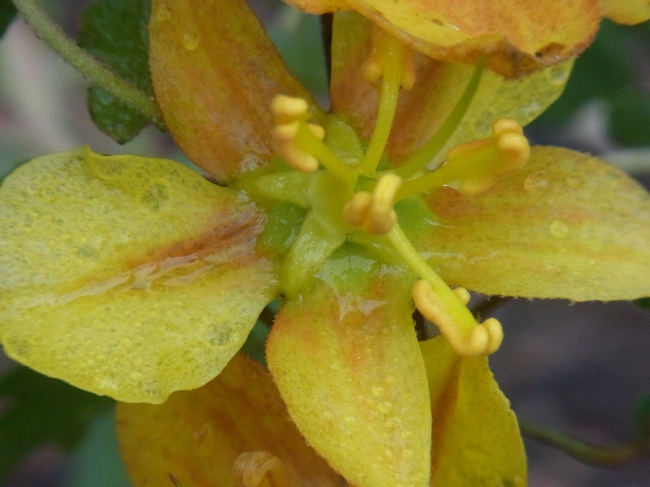
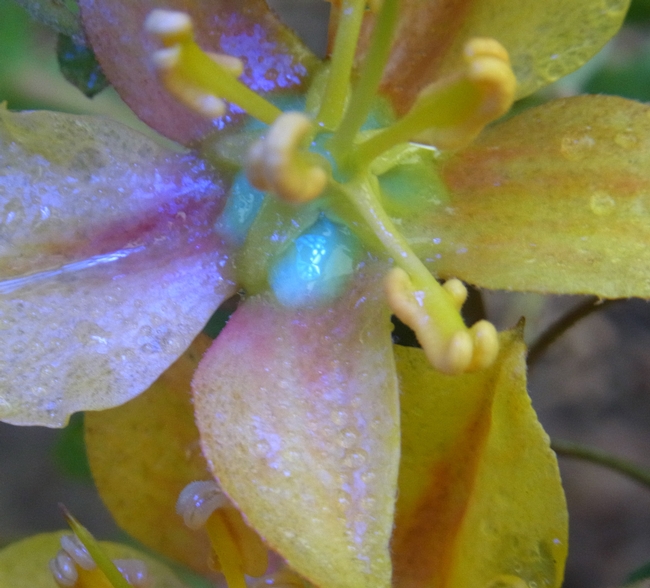
But, you might be thinking, I see bees on red flowers all the time! Well bees can use more than color to find a flower, which brings us to scent....I'll discuss this in a future post.
2. Does color pattern in the garden matter to bees? One study (Proc. R. Soc. London B. 2003. 270: 569-575) found that honey bee foraging distance was longer in simple landscapes; this makes sense because honey bees do best with a varied diet and need to travel further to find a mix of flowers in a simple landscape. Conversely, waggle dance activity was greater in complex landscapes because the patches of plants were more variable -- high quality and low quality plants were mixed together. So it's also important to ensure a good mix of high-quality bee plants in appropriately-sized patches.
3. Another aspect of flower color often not considered is patterns on the flowers themselves. Called nectar guides, these serve to guide bees into the nectary. Of course they pick up and deposit pollen as they do this, thereby pollinating the flower.
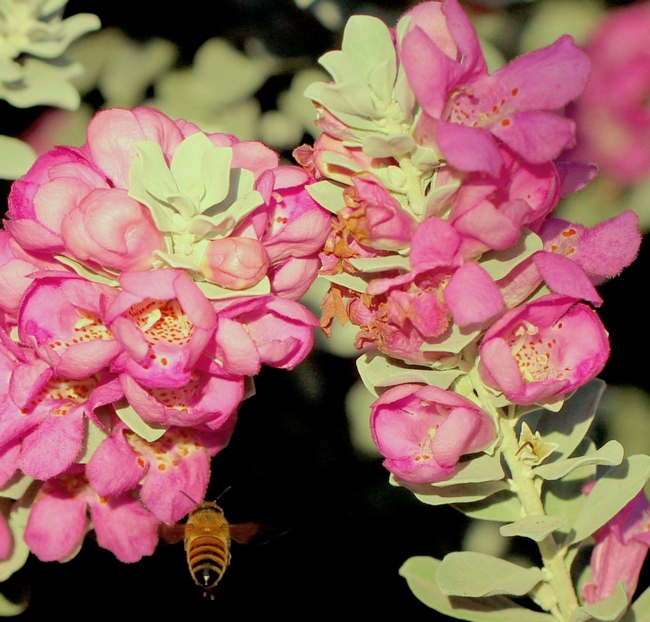
For lots more detail about how bees see, check out this article. My next post will cover shape, size, scent, and texture. I'll finish with suggested plant lists and planting plans. Here's to your successful bee garden!
- Author: Christine Casey
We have an exciting selection of classes and events planned for 2018 at the Haven. And we're off to a great start: 575 visitors joined us on Biodiversity Museum Day to learn about bees and flowers, to make 'Feed the Bees' cookies, and to try their skill at safely catching and observing bees with our insect vacuums. The day before #BioDivDay we hosted the Outstanding Farmers of America. It was great to share the Haven with so many of the growers who depend on bees to produce their crops.
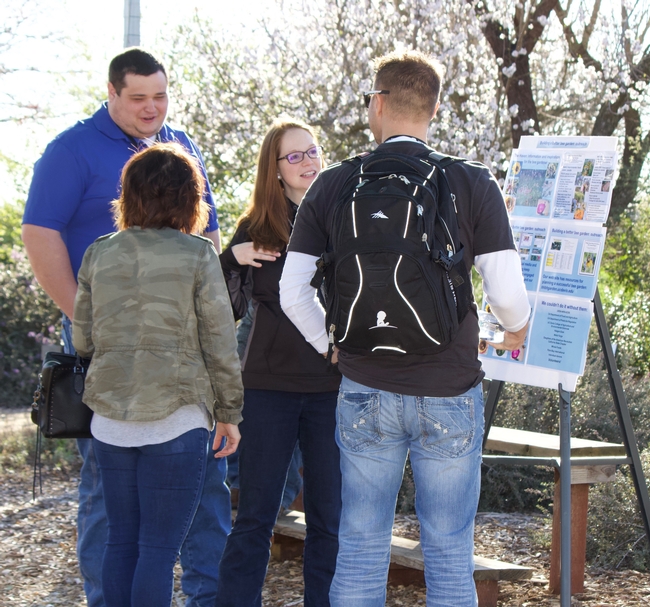
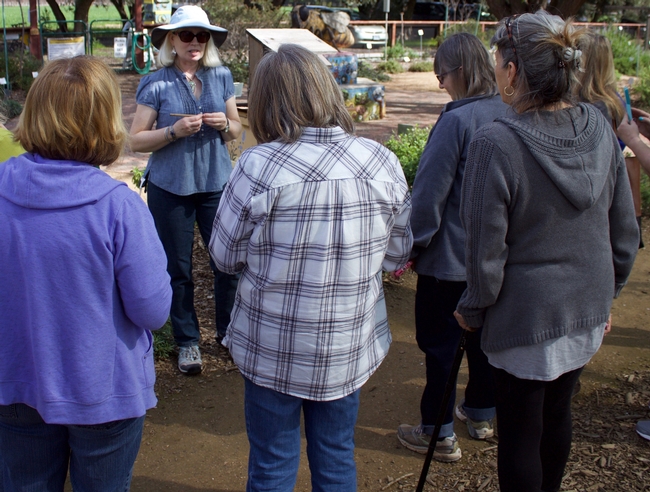
We'll be offering our bee gardening class again this year; a new class is Bee Watching for Beginners. Ever wondered what all those different bees at the Haven or in your garden are? This is the class for you!
Our next event is our Spring Open House on April 7; click here for a complete list of 2018 events and classes. Hope to see you there!
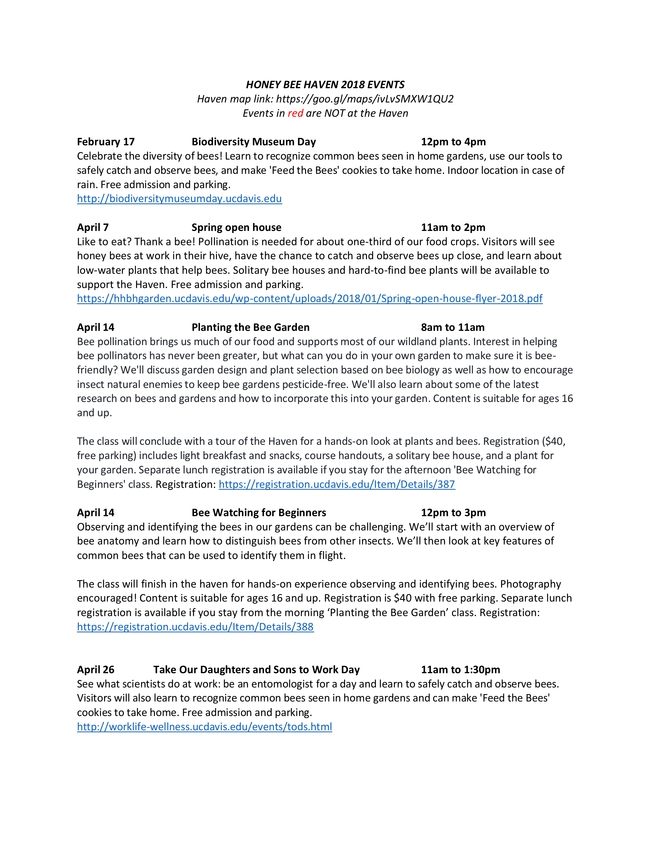
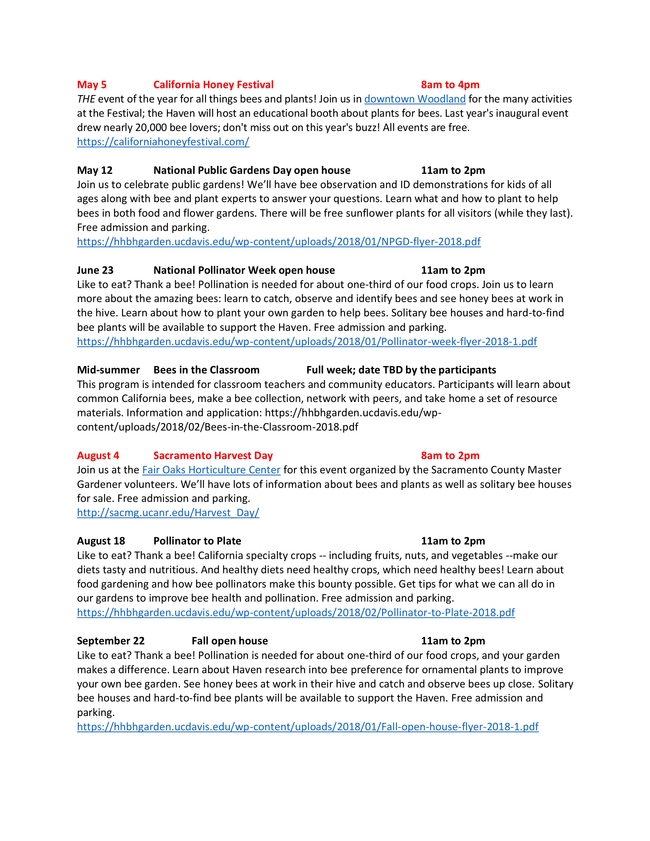
- Author: Christine Casey
Like all animals, bees need food, water, and shelter. Most insects get all the water they need from their food: think of a caterpillar that feeds on plant leaves, which are mostly water. However, the pollen and nectar that constitute a bee's diet don't contain much moisture, so bees must have a water source. As the weather warms and foraging activity picks up, honey bees will start looking for water as well as pollen and nectar.
Honey bees are good learners, and once they find a water supply they will return regularly. Water is so important that foragers will do the waggle dance to direct hive mates to water sources just as they will for flowers. So to direct bees to the water you want them to use, it's important to provide attractive sources early in the year (i.e. now!) so they will learn these rather than the places you don't want them, such as a swimming pool.
So just what is a good water source? Here are some guidelines:
Accessible to bees
Bees can't swim! They must be able to stand where it's dry and drink. Good systems include shallow bird baths or pot bottoms filled with water and pebbles or corks. These allow the bees to stand and drink; they'll generally dry out too quickly for mosquitoes to be an issue. If your water source is a pond, Bacillus thuringiensis israelensis may be used for mosquito control as it's harmless to bees. At the Haven, we create 'pots' using coiled soaker hoses. Connected to a timer-controlled water supply, these are a great way to efficiently deliver water in bee-sized droplets. I provided construction details for this in a previous post.
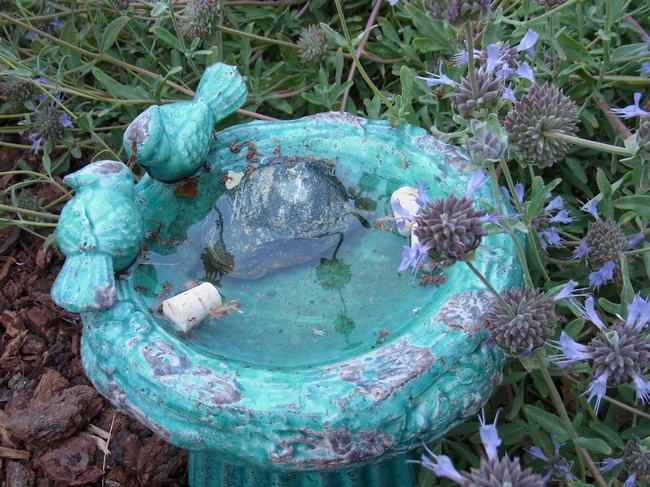
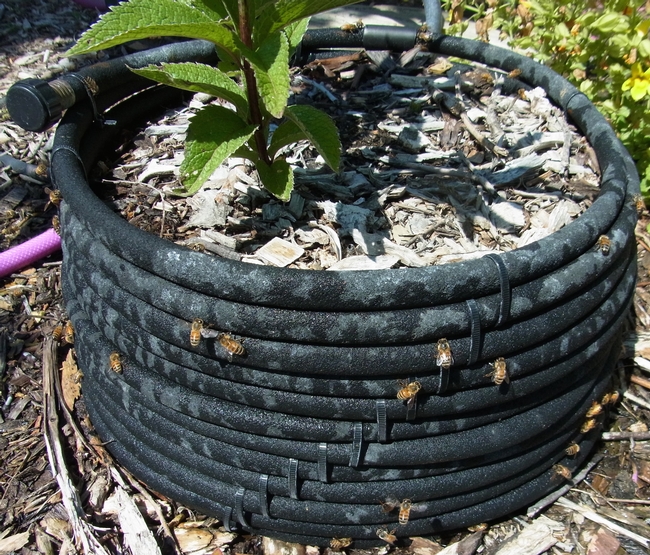
Nutritious for bees
Water needs to be nutritious? Surely bees need the same fresh, clean water that you or I might want? It turns out that water is an important route for bees to obtain essential nutrients. Butler (J. Experimental Biology, 1940, (17):253-261) coined the term 'dirty water' to refer to water containing nutrients. Probably because in the agricultural areas of Great Britain where he observed bees, they frequented areas we might consider undesirable. As he stated in his paper,
"It is well known that honeybees tend to collect water from many undesirable sources, such as rain-water gutters that are choked with decaying organic matter, on the puddles that form on the top of cow dung and sewage effluent, rather than from a source of clean water provided in the apiary for their use."
He performed chemical analysis of the water at these sites and found it to be high in various nutrients that were leaching from the organic material. Water with high sodium chloride (yes, table salt) seemed to be the source preferred by bees. A previous study (Hertz, Z. Vergl. Physiol., 1935, (21):463) suggested that bees used olfactory cues to located these preferred sources. To test this, Butler washed preferred water using activated charcoal and found that bees were unable to distinguish between the washed preferred water and distilled water. This confirmed Hertz' theory that odor cues are used to locate mineral-rich water. The take home from this? Don't place your water source near highly scented plants, and let leaves and algae sit in your bee water source.
More recent work by Bonoan et al. (Ecol. Entomol., 2017, (42):195-201) looked at drinking water as a source of micronutrients for bees. Honey bees were allowed to forage freely in a meadow and were provided water sources with varying chemical components. As with Butler, during much of the year they found that bees had a strong preference for sodium-rich water, regardless of plant diet. In the fall, however, when pollen is scarce, they showed a preference for water sources containing calcium, magnesium, and potassium, all of which are found in pollen. This demonstrated that honey bees have the ability to switch water sources to compensate for dietary nutrient deficiencies.
Plants as water sources
I mentioned earlier that the plant products consumed by bees -- pollen and nectar -- aren't good sources of water. Plants can be an indirect source, though. In a garden with overhead irrigation or large amounts of dew, water can sit for several hours on leaves that are covered with dense hairs. I've shown two examples from the Haven below. Since overhead watering can promote disease and waste water, try giving plants like these a quick wash from the hose so they'll do double duty as nectar and water sources.
